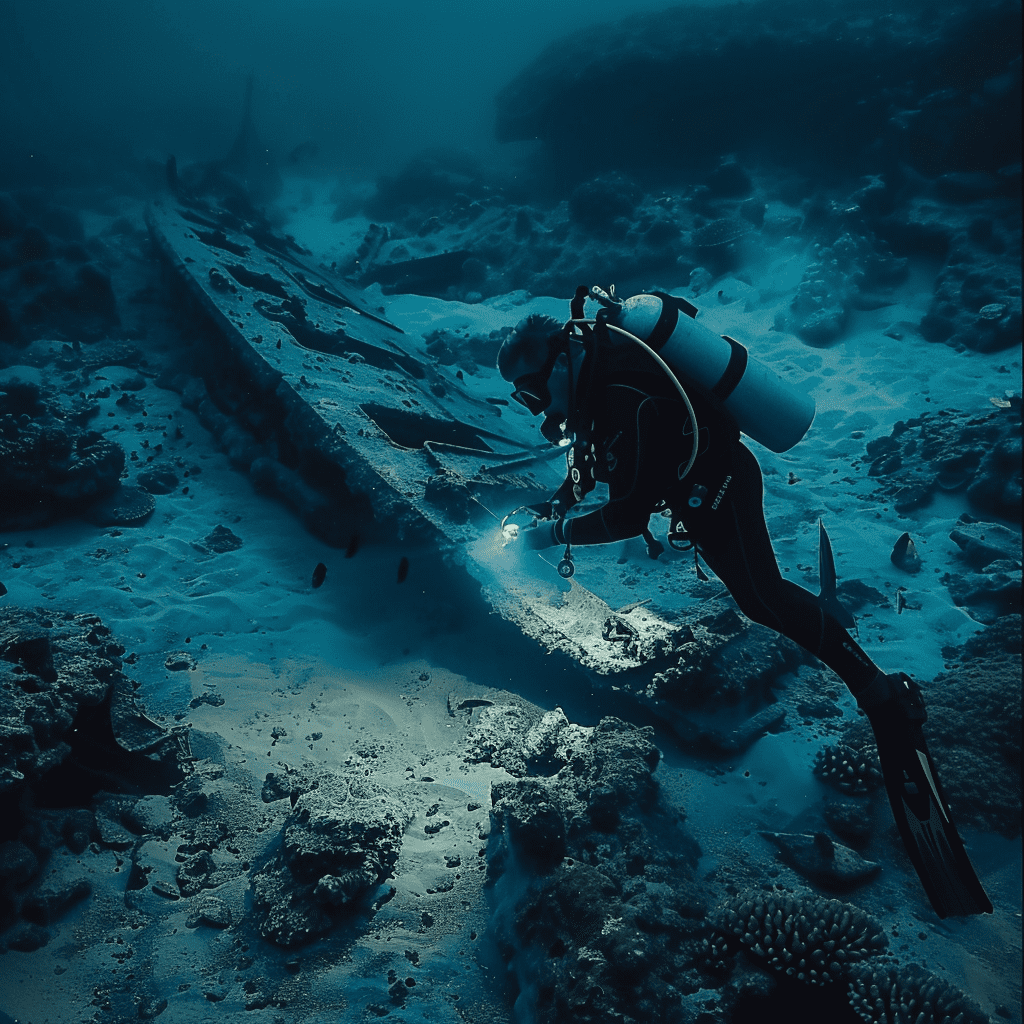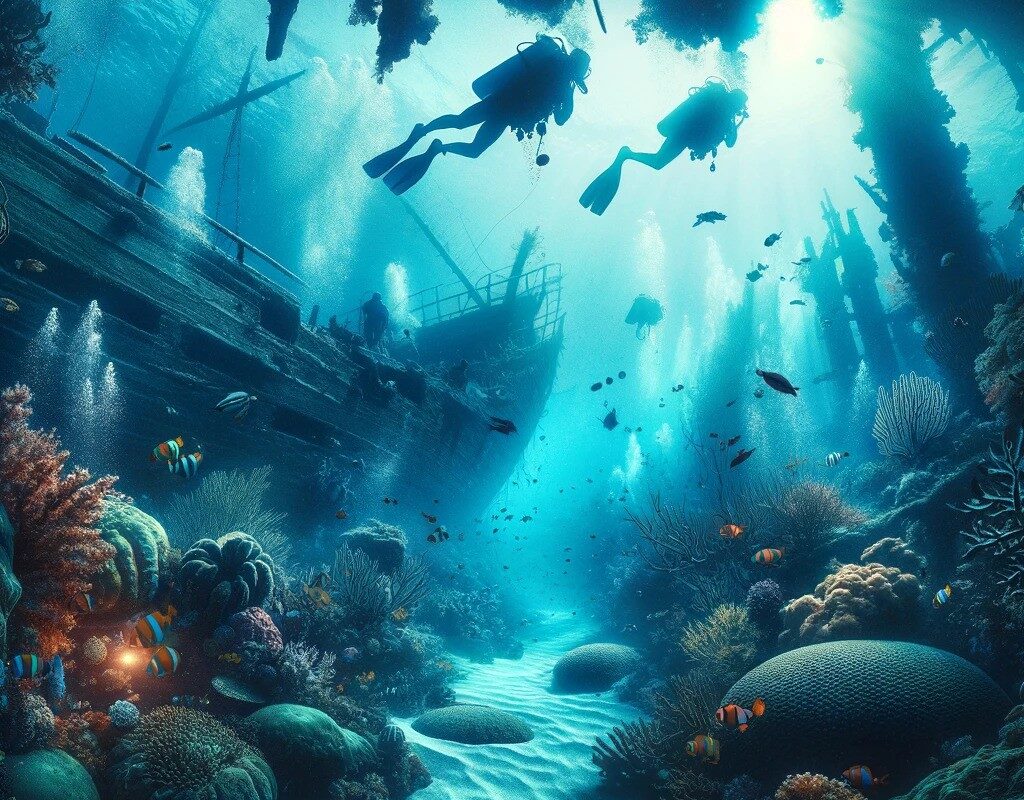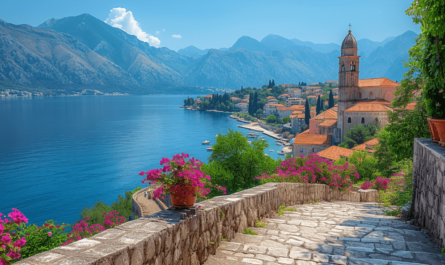Opening our eyes underwater, we are immersed in a completely different reality where every turn can reveal something amazing and incredible. Diving offers a unique opportunity to explore this mysterious underwater world, filled with the mysteries of the ocean depths and a colorful variety of sea creatures. For those with a thirst for adventure and an appetite for discovery, aqualand tours open the door to a world where every dive is a step towards the unknown.
The underwater world: an ocean of possibilities
By diving beneath the surface of the ocean, we open ourselves up to a lost world hidden from the eyes of the ordinary. This world, full of mystery and uncharted depths, is home to an amazing variety of marine creatures and underwater landscapes. From ancient shipwrecks to majestic coral reefs, every corner of the underwater realm is brimming with stories of our planet’s past, present and future. Diving offers not just a sporting pastime, but the opportunity to become part of these stories by exploring the depths and coming face to face with the splendor and beauty of the underwater world.
Choosing a dive site
When choosing a dive site, every diver is faced with a decision that depends on many factors, including personal preference, level of experience and interests.
The world underwater is so diverse that it can satisfy every need, from quietly observing coral reef life to adrenaline-pumping dives to shipwrecks and airplanes.
It is also important to consider seasonality and weather conditions, which can affect underwater visibility and dive safety. Scuba diving offers limitless opportunities for adventure, each of which can be an unforgettable experience that changes the way you view the world.
Comparison of diving conditions
| Location | Visibility underwater | Water temperature | Features |
| Great Barrier Reef | up to 30 m | 24-29°С | Coral reefs, sea turtles |
| Blue Hole, Belize | up to 15 m | 26-29°С | Wall diving, sharks |
| Tulamben, Bali | up to 25 m | 27-29°С | USAT Liberty shipwreck |
| Coral Garden, Redang | up to 20 m | 28-30°С | Coral Gardens, Tropical Fish |
| Koh Tao Island | up to 20 m | 29-31°С | Diving training, reef sharks |
Equipment
Before you go to meet the underwater world, you need to prepare thoroughly. Proper equipment is essential for a safe and comfortable dive. Every diver should be equipped with quality gear, including:
- Mask
- Flippers
- Wetsuit
- Pressure regulator
- Air tank
- A dive computer, which helps to control the time under water and the depth of the dive.
In addition to technical preparation, mental attitude is equally important, because underwater you encounter a completely different world, where it is important to be able to stay calm and focused.

Underwater photography: freezing the moment
Underwater photography opens up another dimension of diving. It is an art that not only allows you to freeze the moment of your encounter with the underwater world, but also to share this incredible experience with others. By photographing underwater, divers witness rare and amazing phenomena that are unavailable in everyday life. Whether capturing the floating dance of jellyfish or the mysterious ruins of underwater cities, each shot tells a unique story. Modern technology and waterproof cameras make the process accessible to even novice photographers, allowing them to unleash their full creative potential.
Exploring the underwater world through diving opens doors to uncharted depths, where every dive is a step towards new discoveries. This world is full of mystery and beauty, accessible only to those who are ready to overcome superficial perception and dive into the depths.
Aqualand tours for diving enthusiasts are not just a journey, but a path to self-discovery through interaction with one of the most mysterious and unknown environments of our planet.
Underwater conservation
Diving into the topic of underwater exploration cannot ignore the issue of preserving underwater ecosystems, which face numerous threats ranging from ocean pollution to climate change. The ecosystems of the seas and oceans play a critical role in maintaining the planet’s biodiversity as well as regulating the climate. Coral reefs, for example, not only provide habitat for millions of species of marine creatures, but also protect coastlines from erosion. However, they are threatened by rising seawater temperatures and over-fishing.
Dive tours focused on eco-tourism offer a unique opportunity to not only explore the underwater world, but also to contribute to its conservation. By holding pre-dive information sessions, the organizers of these tours teach divers about responsible underwater behavior, including minimizing contact with coral reefs and marine life. Many of these programs also incorporate elements of citizen science, allowing divers to participate in collecting data on the status of reefs and marine species, which can then be used by research organizations to monitor changes in underwater ecosystems.
Some aqualand tours offer training in underwater photography and videography, giving divers the opportunity to document and share the beauty of the underwater world, raising awareness of its vulnerability and the need to protect it. These images and videos can play a key role in education campaigns and conservation initiatives, emphasizing the value and vulnerability of underwater ecosystems. Some organizations and dive tour companies directly invest a portion of their profits in coral restoration and marine species protection projects.
FAQ
Site selection is influenced by a diver’s level of training, interests, and desired underwater sites.
The Top 5 locations include the Great Barrier Reef, Blue Hole in Belize, Tulamben in Bali, Coral Garden in Redang and Koh Tao Island.
A mask, fins, wetsuit, pressure regulator, air tank and dive computer are required for diving.


